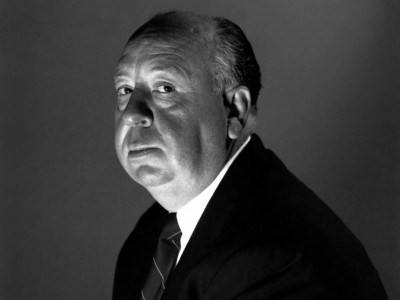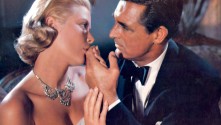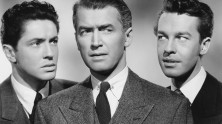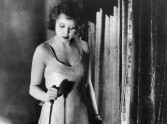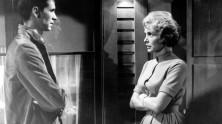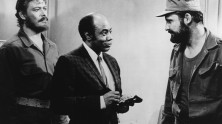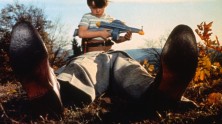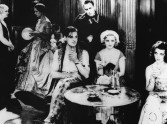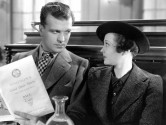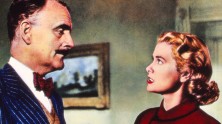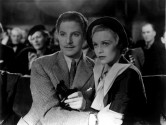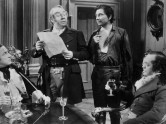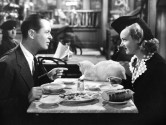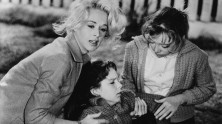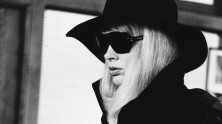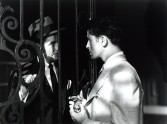
Strangers on a Train
With Farley Granger, Ruth Roman, Robert Walker.
US, 1951, 35mm, black & white, 100 min.
Print source: Warner Bros.
Strangers on a Train’s apparently schematic construction (“mapped out like a diagram,” per Truffaut) belies its deeply insinuating treatment of guilt—a firing shot for Hitchcock’s golden 50s. Dressed to kill in a lobster-adorned tie specially designed by the director, Robert Walker gives an impressively chaotic performance as Bruno, the rogue who proposes a coolly logical murder scheme to tennis star and rising politician Guy Haines: Bruno will kill Guy’s disagreeable wife in exchange for Guy dispatching Bruno’s father. Hitchcock’s incessant doublings and crossings suggest irrepressible forces coinciding with Bruno’s vicarious plan. Guy narrowly triumphs over his fear of exposure, but the precise cuts linking these perfect strangers implies a deeper line of culpability, one that leads directly to the audience’s own stakes in the game. Raymond Chandler was hired to adapt Patricia Highsmith’s novel but proved indifferent to Hitchcock’s visual style of narration; cinematographer Robert Burks, by contrast, became one of the director’s most trusted collaborators.
